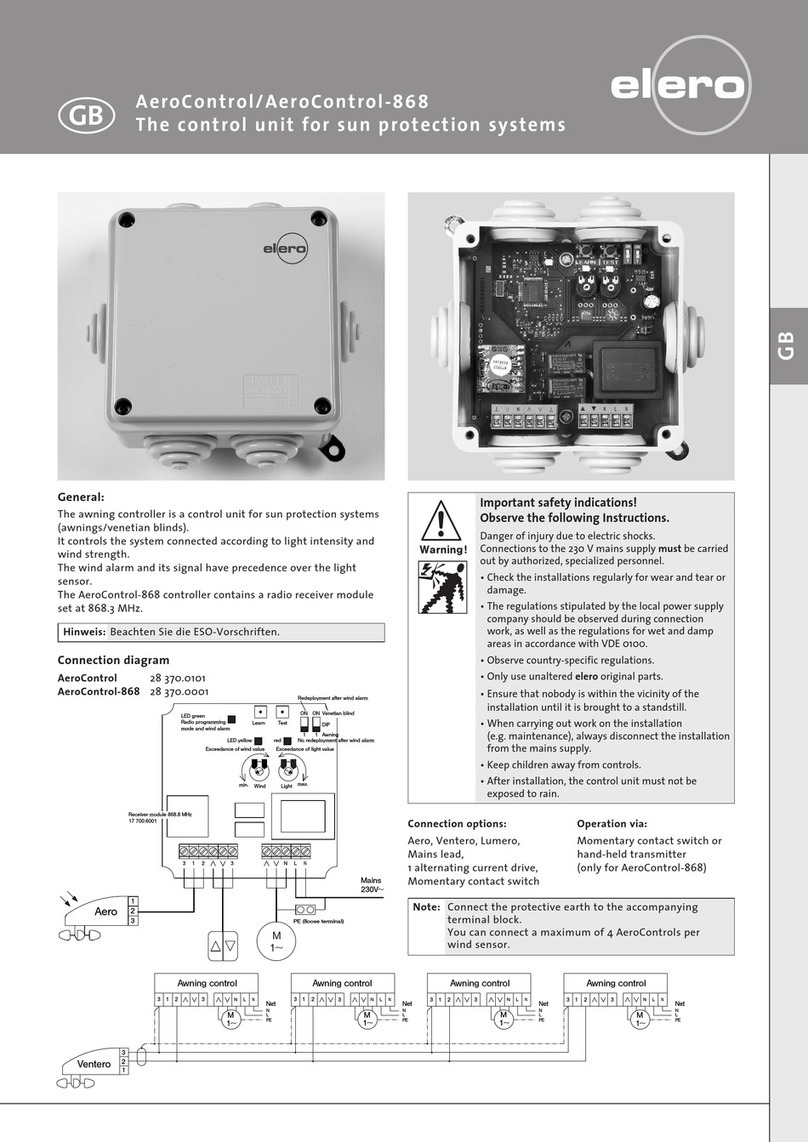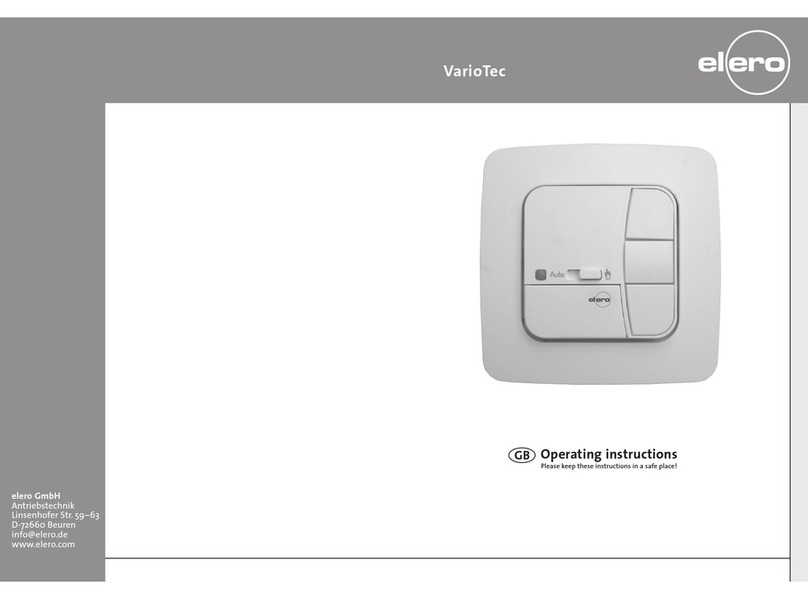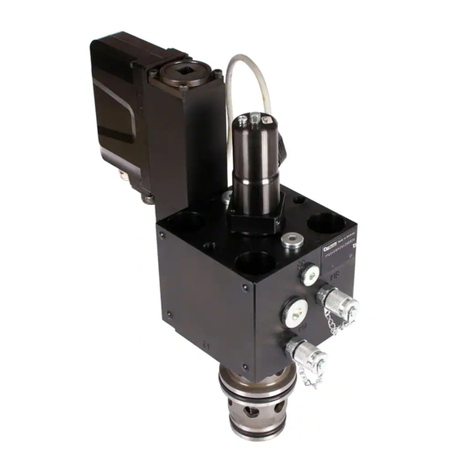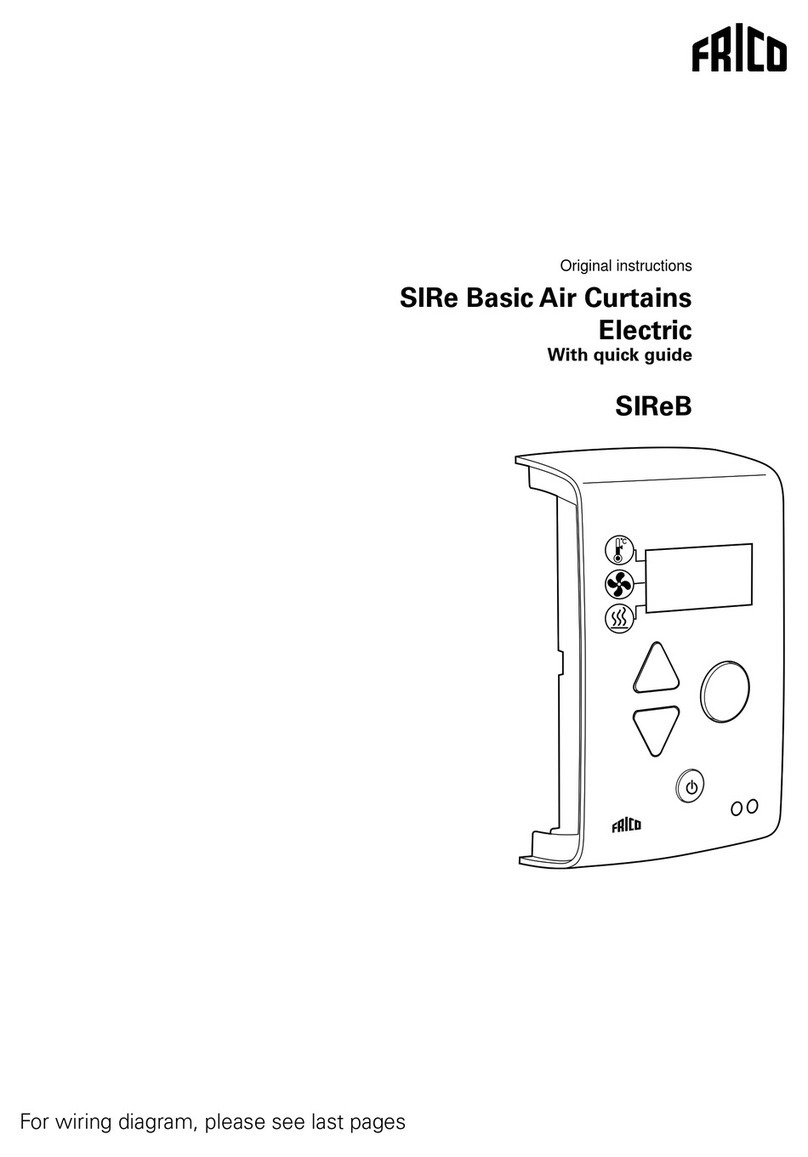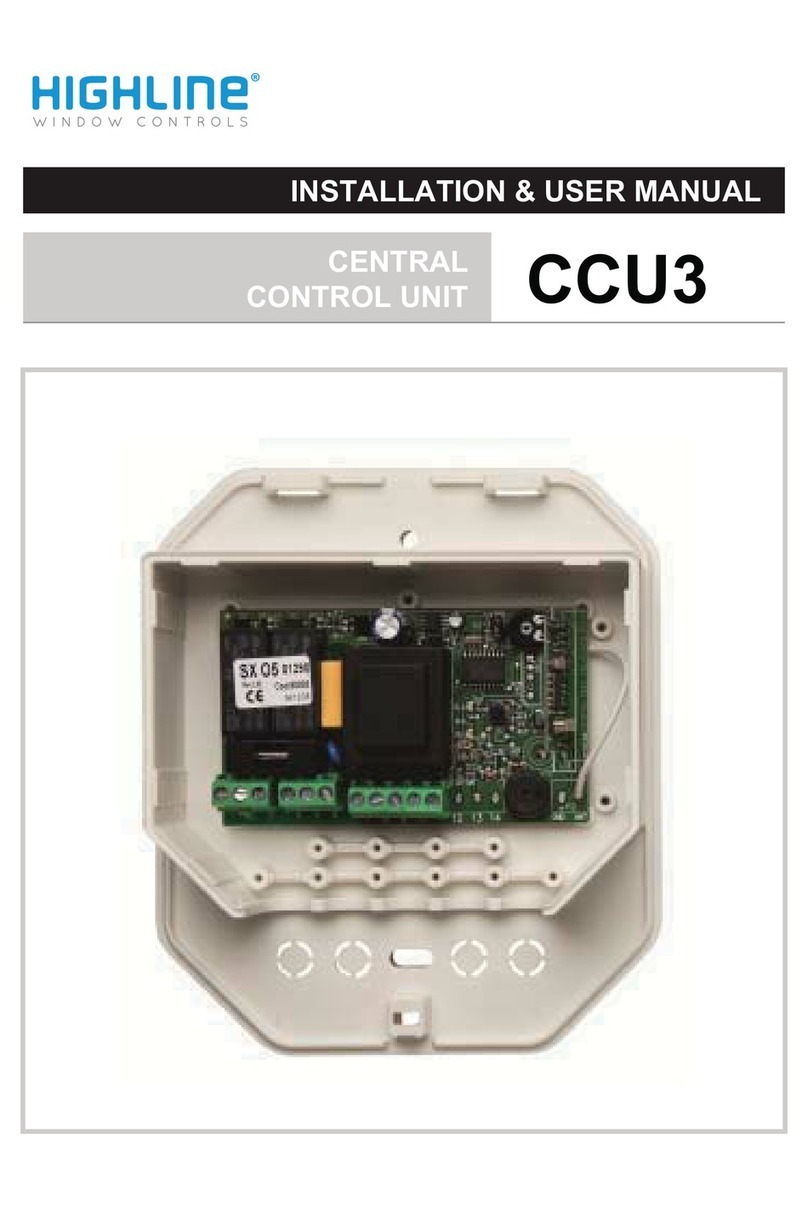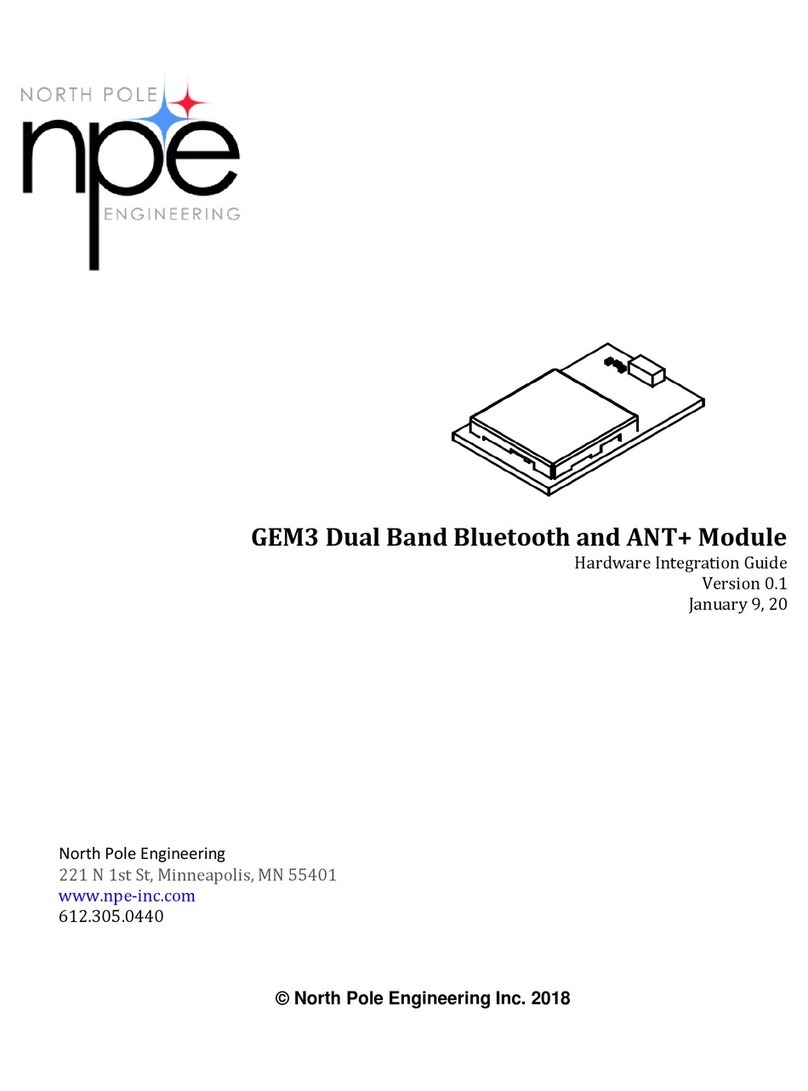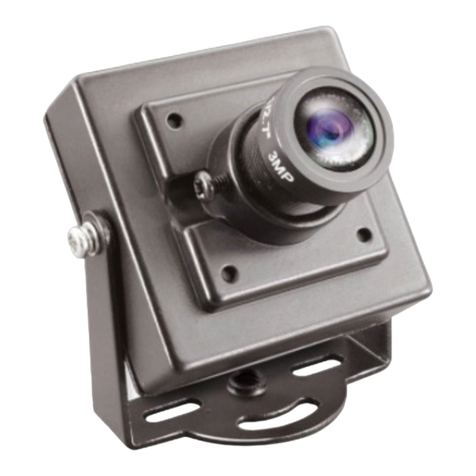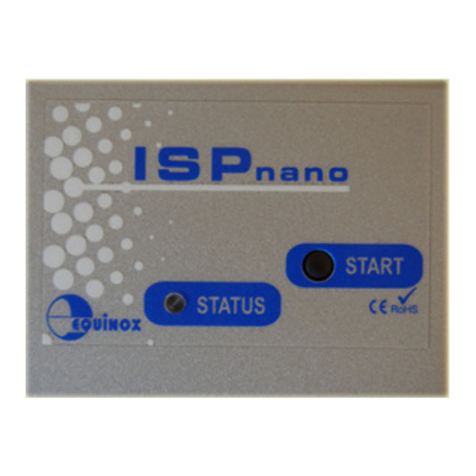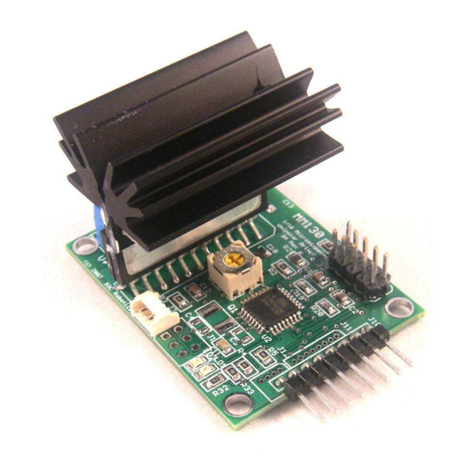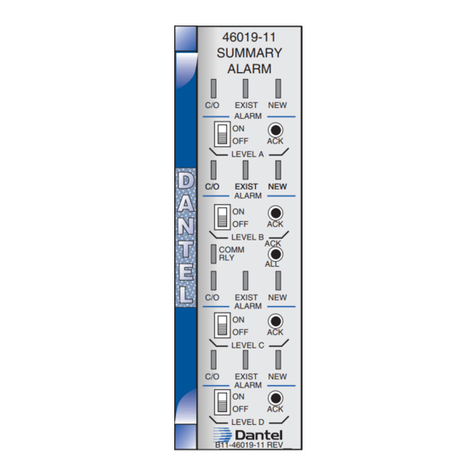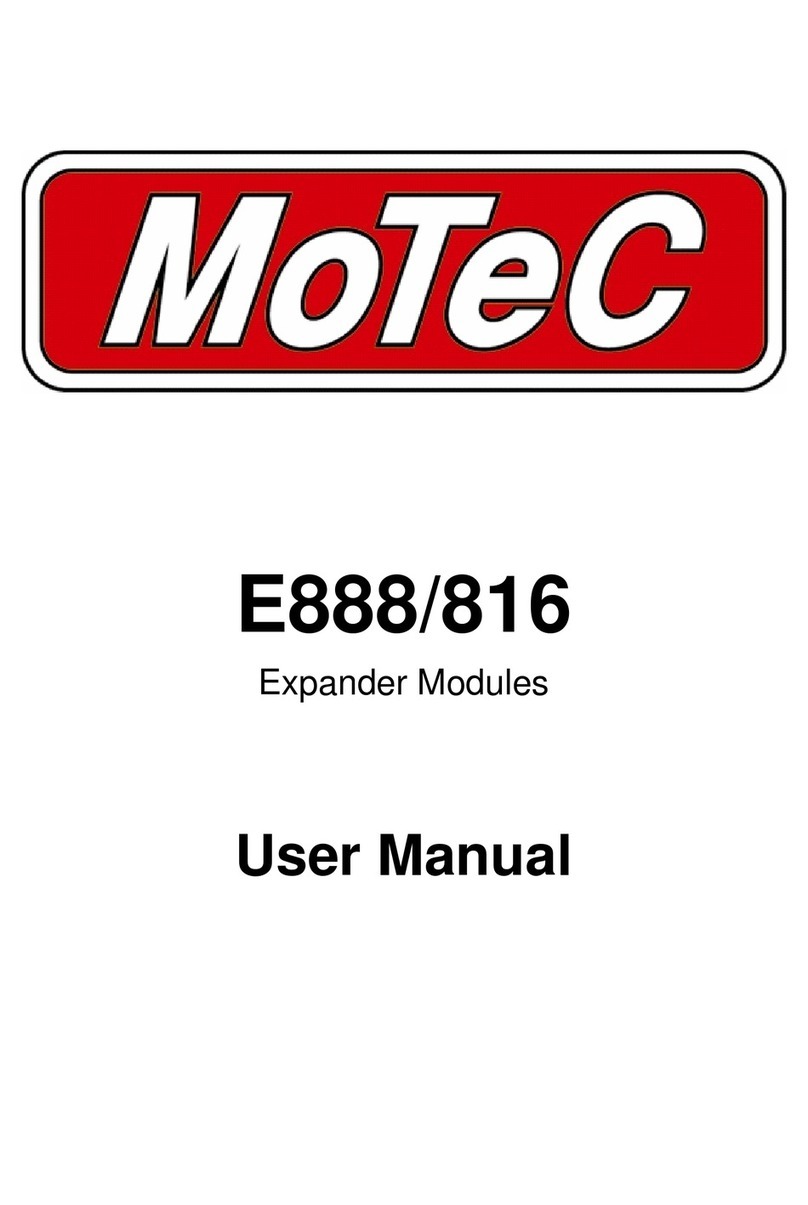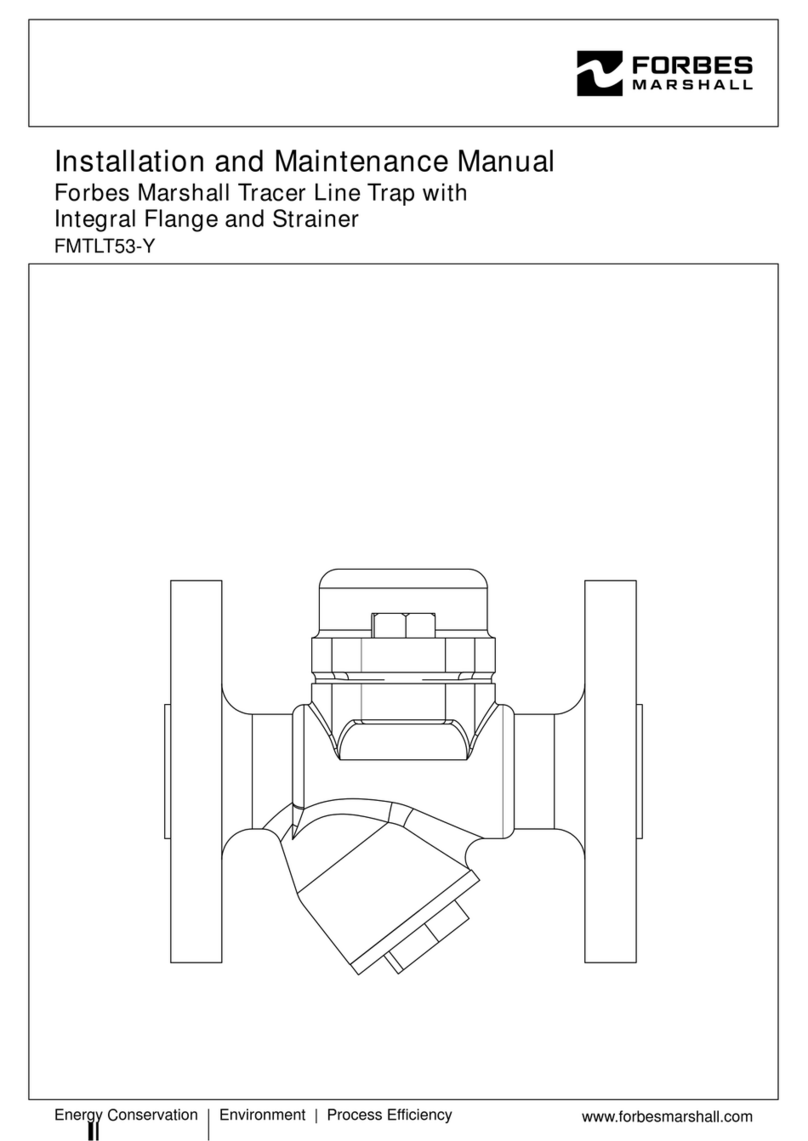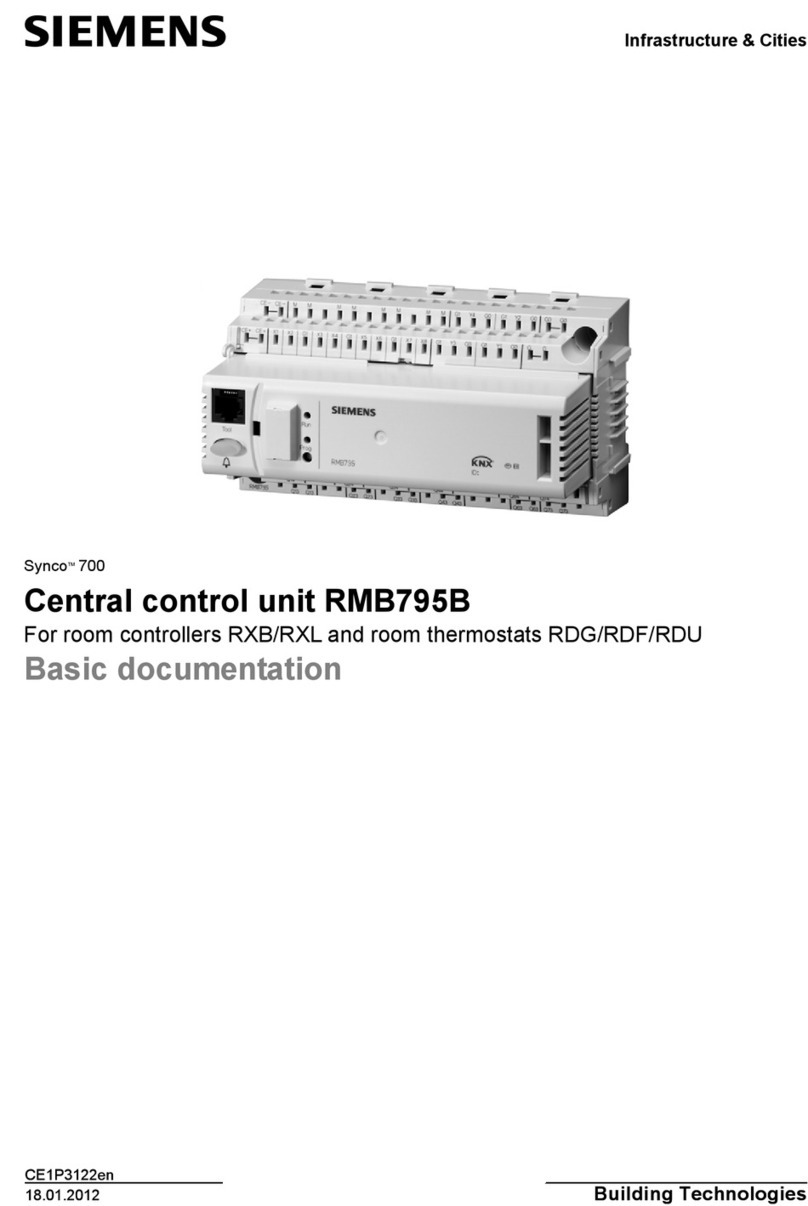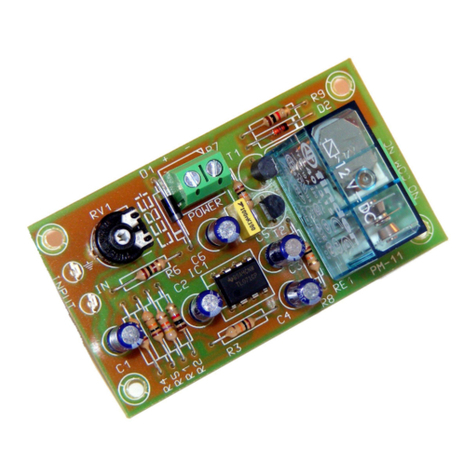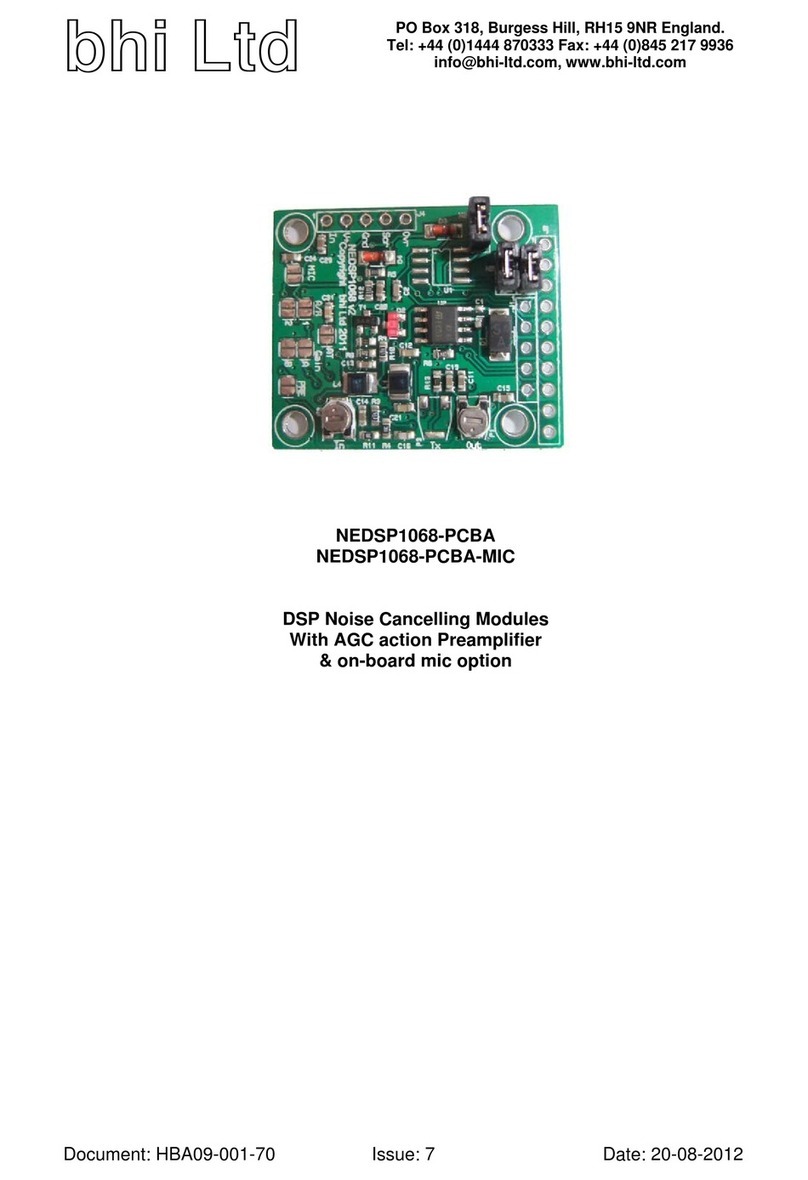elero Aero-868 User manual

Warning!
Important safety instructions!
Observe the following instructions.
• Only use unmodified original elero parts.
• Keep persons away from the system's operating
range.
• Keep children away from the control units.
• Comply with the regulations in your country.
• The system's operating range must be kept in
view during operation if one or more units are
available for controlling the system.
• The unit contains small parts which could be
swallowed.
• Radio systems transmitting on the same
frequency can interfere with the unit.
• Note that the range of the radio signal is limited
by legislation and adjacent walls and buildings.
General information
The Aero-868/915 is a wireless light/wind control unit for awnings.
Integrated solar cells provide the power to run the unit.
Radio signals are transmitted between the Aero-868/915 and the
receiver.
Important!
The Aero-868/915/Aero-868/915 Plus only operates in connection
with elero ProLine 2 and Proline radio receivers.
The awning can be operated manually via a hand-held/wall-mounted
transmitter.
This item is not supplied.
Aero-868/915 Plus features
The Aero-868/915 Plus is fitted with an additional battery and an
additional solar cell.
Recommendation: P
lease use an elero transmitter with manual/
auto switch-over to allow deactivation of the
light function.
Safety instructions
Unit function
Light intensity and wind speed are measured at intervals and sent
to the receiver for further processing.
Brightness above
specified value (delay time
approximately 5 - 7 minutes)
➪ Awning extends (delay time
approximately 5 - 7 minutes)
(orange LED flashes).
Brightness below value
(delay time approximately
15 - 17 minutes)
➪Awning retracts after delay
time or remains retracted.
Wind value above specified
value (wind lock)
➪ Awning retracts or remains
retracted and is blocked for
around 15 minutes (red LED
flashes).
The programmed hand-held transmitter can be used to switch the
Aero-868/915 / Aero-868/915's light function on or off. The wind
function is always active.
Manual/auto switch-over has no effect on the function of the travel
buttons.
Note: The housing may show condensation water.
Intended use
The Aero-868/915 may only be used for the control of awnings
and is not suitable for visual protection.
The Aero-868/915 Plus may only be used for the control of
awnings and venetian blinds.
Third-party devices should only be connected after consultation
with your specialised dealer.
• Please ensure that the radio systems are not operated in areas
where interference is a hazard (e.g. hospitals, airports ...).
•
The remote control is only approved for units and systems for
which any malfunction of the hand-held transmitter or receiver
would not result in a risk to persons, animals or property,
or if such a risk is covered by other safety devices.
• The operator has no protection whatsoever from interference by
other radio transmitters and devices (e.g. radio systems),
that are normally used on the same frequency range.
• Only use radio receivers with equipment and systems
approved by the manufacturer.
10
12
14
2
Off
8
4
6
11
1
3
9
5
7
Function
3
•
Orange LED
(light value)
Red LED
(wind value)
Transmission
LED
(transmit)
DOWN
button
(sun
symbol) UP button
(wind symbol)
Function
position
STOP/P button
Installation instructions (translation)
▼
▼
▲
▼
▼
80
200
135
▼
▼
35
▼
▼
66
Note: Horizontal mounting posi-
tion. Light sensor top, wind
sensor underneath.
80
▼
▼
▼
181122006_EN_0713
Aero-868/915
Aero-868/915 Plus
28 440.0006, 28 480.0006, 28 440.0906, 28 480.0906

2 | EN
Charging the Aero-868/915 / Aero-868/915 Plus
The Aero-868/915 / Aero-868/915 Plus is supplied discharged.
–Before using the Aero-868/915 for the first time, place it under a
lamp/in the sun for at least 30 minutes or press a travel button
for at least 1 minute to the 1st step only.
Note: The travel buttons have two steps.
The first step transfers energy from a built-in cell to the energy
store.
The second step runs the travel command.
Setting the mode (awning, visual protection, roller
shutter)
The Aero-868/915 Plus can be operated in three different modes.
You can switch through the modes in sequence.
The current mode of the Aero-868/915 / Aero-868/915 Plus is
indicated by the transmission LED flashing.
When the system is supplied it is set by default to the awning
mode.
A different mode can also be preset in OEM versions.
Awning mode (1 x flashing of the transmission LED)
The awning is automatically retracted when the current measured
light value changes from 1 to 0 (late evening) or when the current
measured light value changes from 0 to 1 (early morning).
Visual protection mode (only with Aero-868/915 Plus, 2 x
flashing of the transmission LED)
To keep the blind closed in the evening too, close the blind
manually using your hand-held transmitter or a timer.
The current transitions of the measured light values from 1 to 0
(late evening) or from 0 to 1 (early morning) will be ignored.
The blind will remain closed throughout the night.
The switching commands such as tilting position (venetian blind)
or ventilation position (roller shutter) will be executed automatically
the next day.
Roller shutter mode (only with Aero-868/915 Plus, 3 x flashing
of the transmission LED).
If the roller shutter is operated manually or by a timer to the lower
end position, the light function (travel according to specified light
values) is switched off.
The current transitions of the measured light values from 1 to 0
(late evening) or from 0 to 1 (early morning) are ignored.
You can switch on the light function again in several different ways:
– a manual UP travel command (button on the
Aero-868/915 Plus) moves the shutter to the upper end position.
– an automatic timer command moves the shutter to the upper end
position.
– by switching from AUTO mode to MANUAL mode and back to
AUTO mode.
Changing the mode
You will find the multi-way switch for setting the wind threshold value
on the underside of the Aero-868/915 / Aero-868/915 Plus.
1. Use a small screwdriver to set the multi-way switch to Function.
2. Press and hold the UP and DOWN buttons for at least 3 seconds.
Pressing the two buttons again switches to the next mode.
The current mode of the Aero-868/915 / Aero-868/915 Plus is
indicated by the Transmit LED flashing.
The operating mode is indicated by the flashing signal.
Transmission LED flashes 1x ➙awning mode
Transmission LED flashes 2x ➙visual protection mode
Transmission LED flashes 3x ➙roller shutter mode
The mode set is indicated at each radio transmission by the flashing
of the transmission LED (LED flashing pattern 1x every 3 minutes).
Set the multi-way switch back from Function to a wind value of your
choice.
Programming the Aero-868/915 / Aero-868/915 Plus
Condition: The end positions of the awning are set,
a transmitter is programmed.
1. Move the blind to an intermediate position.
2. Press and hold the UP, DOWN and Pbuttons on the programmed
hand-held transmitter for at least 3 seconds.
If the blind now travels UP and DOWN, continue at 4.
If the blind does not travel UP and DOWN, continue at 3.
3. Press and hold the STOP/P button on the Aero-868/915 / Aero
868/915 Plus for 3 seconds until the transmission LED begins
flashing orange rapidly. The blind now moves UP and DOWN for
2 minutes. The transmission LED will flash orange rapidly every
time a button is pressed if the system is in programming mode.
4. Press the UP button on the unit immediately after the start of an
up movement (retract) bmodesegins. The drive will stop briefly.
5. Press the DOWN button on the unit immediately after the start of
a down movement (extend) begins. The drive will stop.
The Aero-868/915 / Aero-868/915 Plus is now programmed.
Symbols on the unit
Wind settings
DOWN
button
UP
button
STOP/P
button
/P
Light settings
Setting the threshold values
On the underside of the Aero-868/915 / Aero-868/915 Plus you will
find multi-way switches for setting the threshold values for wind and
light; these can be adjusted using a small screwdriver.
©elero GmbH

EN | 3
Checking the light function (test mode)
Condition: The blind is retracted.
The delay times are shortened in the test mode. You can then test
the travel movement of your system when the light threshold is
exceeded.
1. Press the UP button (wind symbol) for at least 3 seconds until
the transmission LED flashes.
The test mode stays active for 5 minutes but the LED goes out.
Warning!
Risk of injury by the upward and downward travel
of the awning/venetian blind
The test mode is active for 5 minutes. This time
cannot be shortened.
Keep away from the operating range of the system.
2. Shine a torch (not an LED lamp) on the light sensor.
Specified light threshold value is exceeded
➙blind extends/lowers after 5 seconds.
➙orange LED flashes
Light value falls below the specified threshold
➙upward travel of the awning/blind after 15 seconds.
➙orange LED stops flashing
You can repeat the operation as often as you want within 5 min-
utes.
In normal operation the orange LED flashes every 5 seconds and
shows that the threshold values have been reached or exceeded.
Checking the wind function (test mode)
Condition: The blind is retracted.
You can then test the travel movement of your system when the
threshold is exceeded or falls below the threshold specified.
The wind threshold value is automatically set to the lowest value
during the test phase and is reset once the test phase (5 minutes)
is over.
1. Press the UP button (wind symbol) for at least 3 seconds until
the transmission LED flashes.
The test mode stays active for 5 minutes but the LED goes out.
Warning
Risk of injury by the upward and downward travel
of the awning/venetian blind.
The test mode is active for 5 minutes. This time
cannot be shortened.
Keep away from the operating range of the system.
Deleting the programmed Aero-868/915 or
Aero-868/915 Plus
The Aero-868/915 / Aero-868/915 Plus is deleted from the receiver.
1. Press the
DOWN and UP
buttons at the
same time.
10
12
14
2
Off
8
4
6
11
1
3
9
5
7
Transmission
LED (flashes
briefly)
min. 3 sec.
OFF ➙light function is switched off
Step 1 ➙extend in low light level
Light Steps 2-14 ➙intermediate levels
Step 7 ➙factory setting
Step 15 ➙extend at a high light level
Function ➙change the mode
Step 1 ➙retract at low wind speed
Wind Steps 2-10 ➙intermediate levels
Step 4 ➙factory setting
Step 11 ➙retract at high wind speed
a
Wall bracket
hinged at 180°
Wall bracket
hinged at 90°
Mast and corner mounting
Optional accessory
(Item no. 24 269,0201)
Warning!
Risk of injury by the upward and downward travel
of the awning/venetian blind.
Downwinds on the façade can lead to destruction of
the equipment.
The Aero-868/915 / Aero-868/915 Plus cannot detect
these.
Please pay attention to this advice when choosing
your mounting position.
Note: Before mounting in the intended mounting position,
check that the Aero-868/915/ Aero-868/915 Plus and
the receiver work correctly. The Aero-868/915/Aero-
868/915 Plus must not be mounted under projecting
structures.
Wall bracket
The Aero-868/915/ Aero-868/915 Plus can be fastened to the upper
side of the roof or to the façade using the hinged wall bracket.
The wall bracket can be swivelled between -5° and 180°. Secure
the required position once it has been set (see screw a).
Mounting options
Function
The wind multi-way switch must not be switched to "Function".
Setting the threshold values
On the underside of the Aero-868/915 / Aero-868/915 Plus you will
find multi-way switches for setting the threshold values for wind
and light; these can be adjusted using a small screwdriver.
2. Use the hand-held or wall transmitter to move the blind to an
intermediate position.
3. Turn the wind vane. The blind travels in/up immediately. The wind
threshold value for wind is exceeded ➙ red LED flashes.
You can repeat the operation as often as you want within 5 minutes.
The wind alarm lock-out is not active in the test mode.
Note: In normal operation the red LED flashes every 5 sec-
onds and shows that the treshold values have been
reached or exceeded.
©elero GmbH

Technical data
For the USA, Canada, Australia and some nations in South America
the following applies:
Radio frequency: 915 MHz frequency band
Maintenance
The Aero-868/915 / Aero-868/915 Plus must be freely accessible
and must not be overgrown by vegetation.
The Aero-868/915 / Aero-868/915 Plus is maintenance-free.
However the cover must be cleaned from time to time using a
damp cloth.
EC Declaration of conformity
Hereby elero declares, that the product complies with the basic
requirements and the other relevant provisions of the EC directives
2014/53/EU. The complete declaration of conformity can be found
in the download area of our website.
www.elero.com/en/downloads-service/
Fault Cause Remedy
• Awning is
automatically
retracted in the
manual mode
• Wind alarm
• Poor radio connection
• Wait until the wind
alarm lock-out is de-
activated (15 minutes)
or briey interrupt
power supply.
• Change the
position of the
Aero-868/915 Aero
868/9155 Plus
• The travel com-
mands can not
be sent using
the hand-held
transmitter
• Wind alarm is active
• Battery in the hand-
held transmitter is
discharched
• Motor has no power
supply or is over-
heated
• Wait (15 minutes)
• Change battery
• Check power supply
and allow the motor to
cool down
• Awning is not
retracted in
windy conditions
• Wind threshold value
is set incorrectly
• Wind vane is dam-
aged
• Set correct value
• Replace
• Awning is not
extended in
sunny condi-
tions
• Threshold set incor-
rectly
• Wind alarm is still
active
• Manual mode is set
• Poor radio connection
• Light sensor is dirty
• Light threshold value
(OFF setting)
• Set correct value
• Wait
• Set automatic mode
• Change the position
of the Aero-868/915
Aero-868/915 Plus
• Clean light sensor
• Set appropriate level
• Receiver does
not accept new
Aero-868/915
Aero-868/915
Plus
• Aero-868/915
Aero-868/915 Plus
has already been
programmed
• Delete the Aero-
868/915 / Aero-
868/915 Plus
Power supply Solar
Temperature range -25 °C to +60 °C
Detection angle (light sensor) 150 °
Protection class IP 43
Radio frequency 868 MHz frequency band
respectively
915 MHz frequency band
Aero-868/915 power reserve
Aero-868/915 Plus power reserve
≥12 hours
≥24 hours
elero GmbH
Antriebstechnik
Maybachstr. 30
73278 Schlierbach
Phone: +49 7021 9539-0
Fax: +49 7021 9539-212
www.elero.com
Technical parameters subject to change
This manual suits for next models
7
Other elero Control Unit manuals


